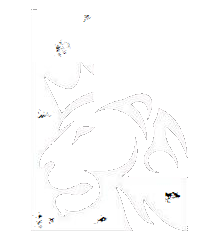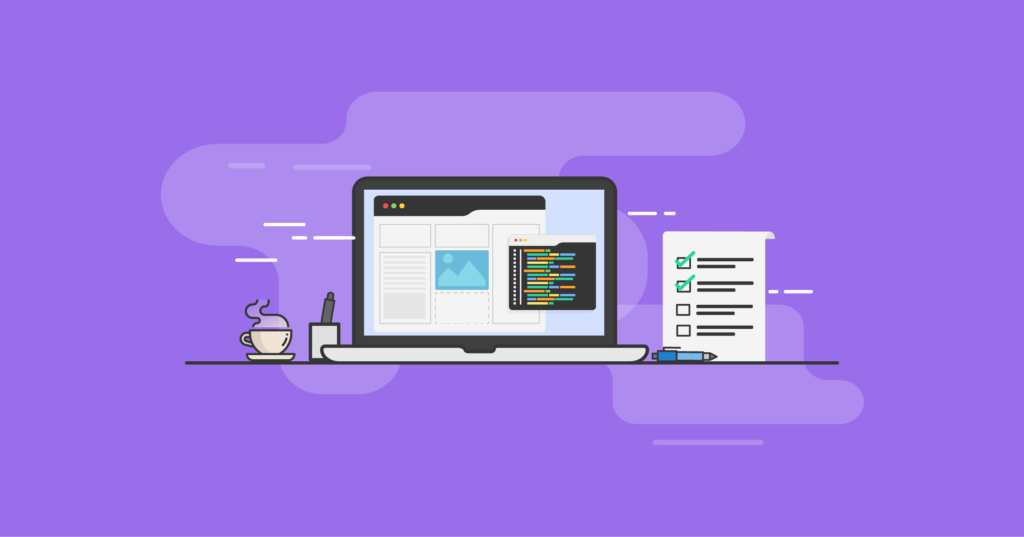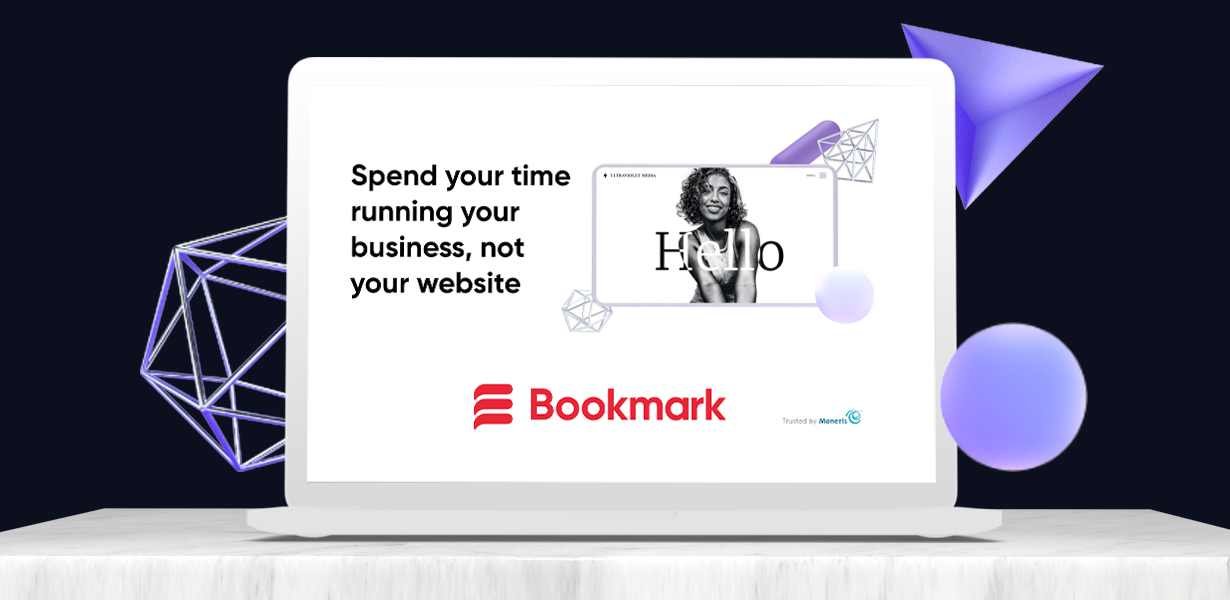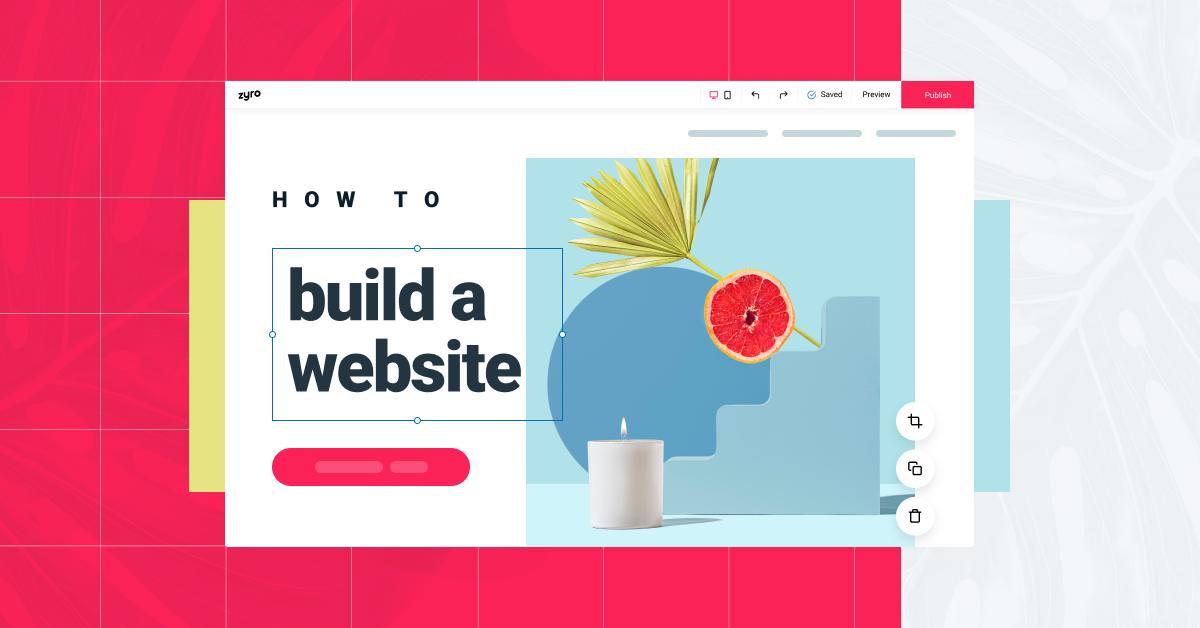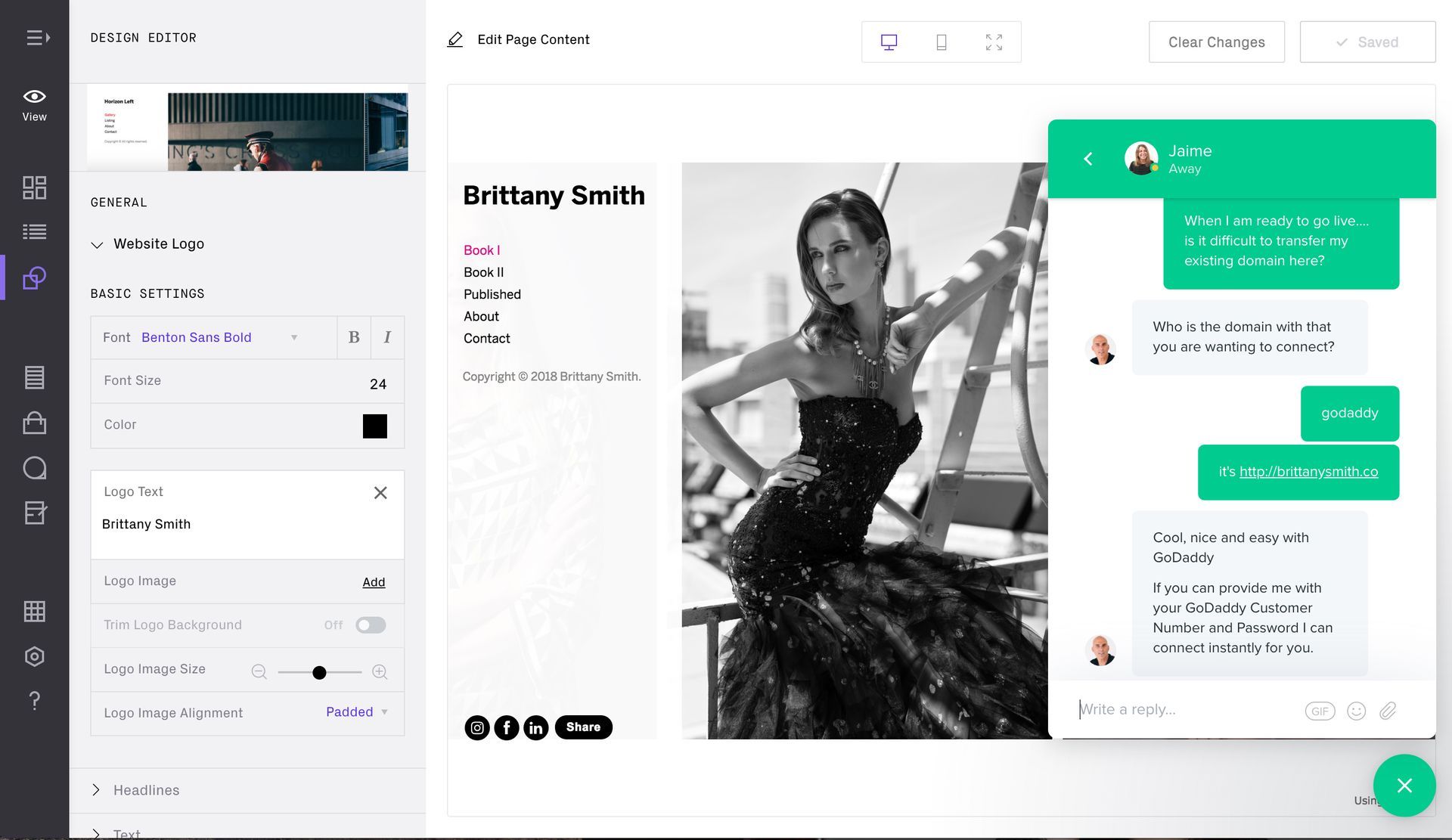8 Minute Read
Web Design Trends
Staying Current in a Dynamic Field
In the world of web design, it is important to keep up with the current trends, keeping in mind that some trends may stay and others may go.
In this article, I'll cover some of the major web design trends so that you have a better understanding of how they work and their unique benefits.
Now, let's delve into each of these web design trends in more detail!
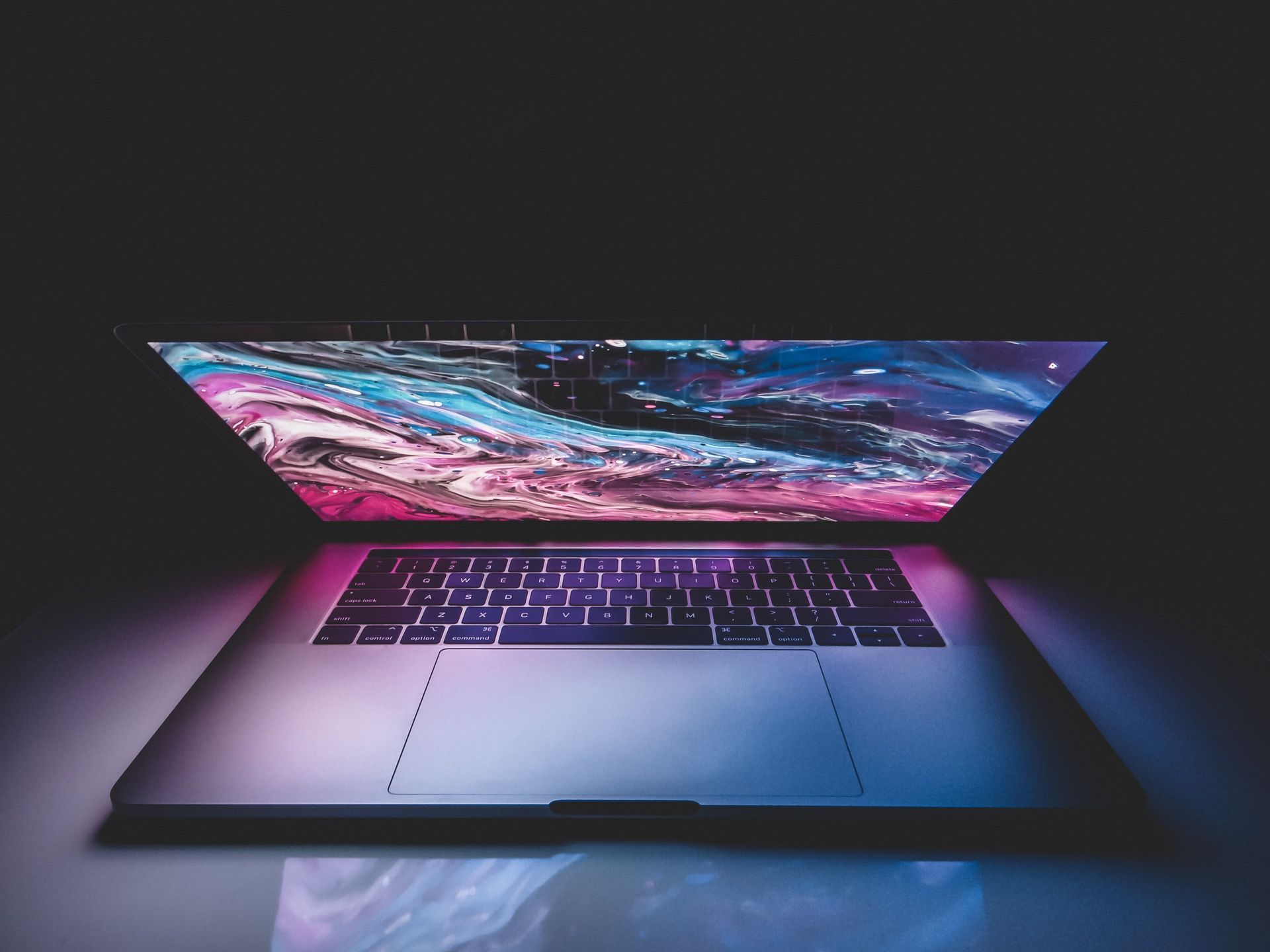
Table of Contents
- Simplified and Minimalistic Design
- Dark Mode
- 3D Elements and Graphics
- Asymmetrical Layouts
- Scrolling Transformations
- Micro-Interactions
- Immersive Storytelling
- Custom Illustrations and Animations
- Bold Typography
- Augmented Reality (AR) Integration
- Video Backgrounds
- Neumorphism
- Voice User Interfaces (VUI)
- Sustainability and Eco-Friendly Design
- Glassmorphism
- Geometric Shapes and Patterns
- Inclusive and Accessible Design
- Retro and Vintage Aesthetics
- Artificial Intelligence (AI) Integration
- Geometric Grids and Layouts
- Custom Cursor Interactions
- Emotional Design
- Data Visualization
- Interactive and Dynamic Cursors
- Typography Kinetics
- Innovative Navigation Menus
- Combining Trends for a Unique Look
- Split Content Layouts
- Web Stories
- Emphasis on User-Generated Content
- Immersive 360-Degree and VR Experiences
- Microcopy and Microinteractions
- Glitch Art and Digital Imperfections
- Retro Futurism
- Custom Scroll Animations
- Interactive Infographics
- Scroll-Triggered Animations
- Fluid and Organic Shapes
- Color Gradients and Duotones
- Dynamic Product Customization
Simplified and Minimalistic Design
- Description: Simplified and minimalistic design focuses on the core elements, removing unnecessary clutter, and emphasizing clean lines, ample whitespace, and a limited color palette. It enhances user experience and ensures faster loading times.
- Benefits: Improved user engagement, faster loading, reduced distractions, and better mobile responsiveness.
- Examples: Apple's website, Google's homepage, and many portfolio websites.
Dark Mode
- Description: Dark mode is a design trend that offers users a dark color scheme instead of the traditional light background. It's not only easier on the eyes, particularly in low-light conditions, but it also saves energy on devices with OLED screens.
- Benefits: Reduced eye strain, energy-efficient, modern look, and improved readability.
- Examples: Twitter, Instagram, and many mobile apps offer dark mode options.
3D Elements and Graphics
- Description: 3D elements and graphics provide depth and realism to web design. Interactive 3D models, animations, and visuals make the website more engaging and immersive.
- Benefits: Increased user interaction, enhanced product displays, and a unique visual appeal.
- Examples: Websites of car manufacturers like Tesla, architectural firms, and e-commerce stores with 3D product views.
Asymmetrical Layouts
- Description: Asymmetrical layouts break away from traditional grid-based designs, offering a more unique and visually striking appearance. They challenge designers to balance elements creatively.
- Benefits: Unique and attention-grabbing designs, more room for creativity, and an opportunity to stand out.
- Examples: Fashion brands, creative agencies, and art portfolios often use asymmetrical layouts.
Scrolling Transformations
- Description: Scrolling transformations involve elements that change as users scroll down the page. Parallax scrolling is a common technique that creates a 3D effect by moving different layers at different speeds.
- Benefits: Engaging storytelling, improved user retention, and a sense of depth and motion.
- Examples: Websites for video games, event promotions, and storytelling platforms.
Micro-Interactions
- Description: Micro-interactions are subtle animations and feedback that occur when users interact with certain elements on a website. These can include button animations, loading spinners, and hover effects.
- Benefits: Enhanced user engagement, improved user experience, and visual feedback for interactions.
- Examples: Social media like Facebook and LinkedIn use micro-interactions in their interface.
Immersive Storytelling
- Description: Immersive storytelling combines clean visual hierarchy and narratives to draw users into the content. This trend is popular for blogs, news websites, and multimedia-rich platforms.
- Benefits: Captivating storytelling, improved user engagement, and the conveyance of complex ideas.
- Examples: National Geographic's website, The New York Times' multimedia stories, and immersive travel blogs.
Custom Illustrations and Animations
- Description: Custom illustrations and animations are designed to reflect the brand's identity and values. They serve as a visual storytelling tool and can convey complex concepts.
- Benefits: Reinforces branding, captures attention, and communicates brand personality.
- Examples: Slack's unique illustrations, Dropbox's animations, and Mailchimp's quirky design elements.
Bold Typography
- Description: Bold typography involves using large, eye-catching fonts as a design element. Typography is not just for readability but also as a visual component.
- Benefits: Emphasizes content, enhances readability, and adds a unique visual character to the website.
- Examples: Websites for fashion brands, creative agencies, and lifestyle blogs often use bold typography.
Augmented Reality (AR) Integration
- Description: AR integration brings interactive and engaging experiences to the website. This includes virtual try-ons for products, navigation with AR features, and location-based AR experiences.
- Benefits: Enhanced user engagement, interactive product displays, and real-world applications.
- Examples: IKEA's augmented reality app for furniture placement, real estate websites with virtual property tours.
Video Backgrounds
- Description: Video backgrounds are captivating visuals and storytelling tools. They engage and inform users, adding a dynamic element to the website.
- Benefits: Captivating visuals, enhanced storytelling, and user engagement.
- Examples: Airbnb's website often features video backgrounds, as do video production agencies and creative portfolios.
Neumorphism
- Description: Neumorphism is a design trend that combines skeuomorphic elements with soft, subtle 3D effects. It often features elements that resemble buttons with a tactile appearance.
- Benefits: Creates a tactile feel, visually appealing, and adds depth to elements.
- Examples: Personal websites, portfolio sites, and app interfaces.
Voice User Interfaces (VUI)
- Description: VUI involves voice-activated features that enable hands-free navigation. With the rise of voice assistants, VUI is becoming more prominent in web design.
- Benefits: Accessibility, convenience, and engagement for users who prefer voice interactions.
- Examples: Websites for smart home control, e-commerce websites with voice search, and accessibility-focused websites.
Sustainability and Eco-Friendly Design
- Description: Sustainability in web design involves incorporating eco-conscious design elements. It can promote eco-friendly products, practices, and reflect social responsibility.
- Benefits: Appeals to environmentally conscious audiences, conveys a brand's commitment to sustainability.
- Examples: Websites of eco-friendly brands, sustainable fashion labels, and environmental organizations.
Glassmorphism
- Description: Glassmorphism is a design trend that incorporates frosted glass-like elements in the user interface. It involves transparency, blurriness, and background images to create a sense of depth.
- Benefits: Visually appealing, modern, and adds depth to the design.
- Examples: Windows 11 interface, various mobile apps, and product websites.
Geometric Shapes and Patterns
- Description: The use of geometric shapes and patterns as design elements, such as triangles, hexagons, and repeating patterns, can add a dynamic and visually interesting element to your website.
- Benefits: Eye-catching, modern, and adds structure to the design.
- Examples: Tech startups, creative agencies, and portfolio websites.
Inclusive and Accessible Design
- Description: Inclusive and accessible design involves creating websites that are user-friendly for people with disabilities. This includes features like alt text for images, keyboard navigation, and high-contrast themes.
- Benefits: Expands your audience, adheres to legal requirements, and demonstrates social responsibility.
- Examples: Government websites, educational institutions, and large corporations.
IRetro and Vintage Aesthetics
- Description: Nostalgic design that draws inspiration from past eras, such as the 80s or 90s. It often includes retro color palettes, fonts, and vintage imagery.
- Benefits: Evokes nostalgia, creates a unique style, and appeals to specific target audiences.
- Examples: Music bands, clothing brands, and events with a retro theme.
Artificial Intelligence (AI) Integration
- Description: Integrating AI elements into web design, such as chatbots, personalized content recommendations, and AI-driven user interfaces.
- Benefits: Enhances user experience, automates tasks, and provides personalized interactions.
- Examples: E-commerce websites with chatbots, news websites with personalized content recommendations.
Geometric Grids and Layouts
- Description: Geometric grid layouts break away from traditional grids and involve complex geometric shapes for organizing content.
- Benefits: Unique and visually striking designs, encourages creativity, and organizes content in a structured way.
- Examples: Architectural firms, art galleries, and creative portfolios.
Custom Cursor Interactions
- Description: Customized cursors, such as animated icons or unique shapes, that respond to user interactions.
- Benefits: Enhances user engagement, adds a playful element, and offers visual feedback.
- Examples: Interactive gaming websites, design agency portfolios, and creative showcases.
Emotional Design
- Description: Web design that intentionally aims to evoke specific emotions in users, whether it's joy, empathy, or excitement.
- Benefits: Strong emotional connections with users, increased brand loyalty, and improved user engagement.
- Examples: Charities and nonprofits, healthcare websites, and entertainment platforms.
Data Visualization
- Description: Presenting complex data and information in a visually appealing and easily digestible way. This can include interactive charts, graphs, and infographics.
- Benefits: Enhances user understanding, improves engagement with data, and is informative.
- Examples: News websites, financial institutions, and research organizations.
Interactive and Dynamic Cursors
- Description: Cursors that respond to user actions, such as changing shape, color, or providing visual feedback.
- Benefits: Enhances user engagement, provides feedback, and adds a dynamic element to the design.
- Examples: Gaming websites, interactive learning platforms, and creative portfolios.
Typography Kinetics
- Description: Typography kinetics involve animated and dynamic typography that responds to user interactions, adding a sense of motion and interactivity.
- Benefits: Captures user attention, adds a dynamic element, and emphasizes content.
- Examples: Event websites, creative agency portfolios, and promotional landing pages.
Innovative Navigation Menus
- Description: Unique and creative navigation menus that offer a different approach to traditional menus, such as hidden menus, mega menus, or experimental navigation styles.
- Benefits: Enhances user experience, adds a unique design element, and encourages exploration.
- Examples: Creative agency websites, art galleries, and experimental design showcases.
Combining Trends for a Unique Look
- Description: Combining multiple design trends to create a unique and visually striking website that stands out from the competition.
- Benefits: A truly distinctive design, the ability to cater to various user preferences, and staying ahead of the curve in web design.
- Examples: Many innovative startups and creative agencies often combine multiple trends to create a unique look.
Split Content Layouts
- Description: Split content layouts divide the web page into distinct sections, often with two contrasting or complementary visuals or pieces of content side by side. This trend provides an engaging way to showcase content.
- Benefits: Improved visual hierarchy, dynamic presentation, and creative storytelling.
- Examples: Product features comparison, before-and-after content, and dual-call-to-action sections.
Web Stories
- Description: Web stories are a format for creating short, visual, and interactive narratives. They offer a visually appealing and mobile-friendly way to present content.
- Benefits: Enhanced mobile experience, user engagement, and storytelling opportunities.
- Examples: Instagram Stories, Snapchat Stories, and news outlets using stories for breaking news.
Emphasis on User-Generated Content
- Description: User-generated content (UGC), such as customer reviews, social media posts, and testimonials, is prominently featured on websites. It adds authenticity and builds trust with the audience.
- Benefits: Builds trust, fosters community, and provides social proof.
- Examples: E-commerce websites showcasing customer reviews, social media feeds, and testimonial sections.
Immersive 360-Degree and VR Experiences
- Description: Incorporating 360-degree images or graphics and virtual reality (VR) experiences to provide users with immersive, interactive, and engaging content.
- Benefits: Enhanced user engagement, interactive product views, and a unique, immersive experience.
- Examples: Real estate websites offering virtual property tours, travel agencies showcasing VR travel experiences.
Microcopy and Microinteractions
- Description: Microcopy includes small, concise, and impactful pieces of text that guide users or provide context. Microinteractions are subtle animations or feedback that improve user experience.
- Benefits: Clarity, improved user guidance, and enhanced user engagement.
- Examples: Tooltip text, loading animations, and subtle hover effects.
Glitch Art and Digital Imperfections
- Description: Embracing digital glitches, pixelation, and visual imperfections in design to create a unique and visually striking look.
- Benefits: Creates a unique style, evokes nostalgia, and captures attention.
- Examples: Artistic portfolios, experimental design projects, and creative agency websites.
Retro Futurism
- Description: Retro futurism blends elements from past visions of the future with modern design aesthetics. It combines nostalgia with futuristic elements.
- Benefits: Evokes nostalgia, creates a unique visual style, and appeals to a sense of nostalgia for the future.
- Examples: Sci-fi book covers, retro-futuristic product pages, and themed event websites.
Custom Scroll Animations
- Description: Custom scroll animations are animations triggered by a user's scroll, providing a dynamic and engaging element to the website.
- Benefits: Captures user attention, adds a dynamic feel to the design, and tells a story as users scroll.
- Examples: Creative agency portfolios, storytelling websites, and product showcases.
Interactive Infographics
- Description: Infographics are made interactive, allowing users to explore data or content in a more engaging and hands-on way.
- Benefits: Enhanced user engagement, improved understanding of complex data, and dynamic content presentation.
- Examples: Educational websites, news outlets, and data-driven reports.
Scroll-Triggered Animations
- Description: Animations and effects that activate as users scroll down the page, creating a sense of progression and storytelling.
- Benefits: Enhanced user engagement, visual storytelling, and user guidance.
- Examples: Landing pages, product showcases, and portfolio websites.
Fluid and Organic Shapes
- Description: The use of fluid and organic shapes and lines in web design, which contrast with rigid, geometric elements. They add a natural and flowing feel to the design.
- Benefits: Creates a unique style, adds depth, and softens the visual appearance.
- Examples: Nature-inspired websites, wellness brands, and creative agency portfolios.
Color Gradients and Duotones
- Description: Color gradients and duotones are used to create visually striking backgrounds and elements. Gradients offer a smooth transition between colors, while duotones use two contrasting colors for a bold look.
- Benefits: Captures attention, adds depth, and creates a vibrant visual experience.
- Examples: Mobile apps, music websites, and fashion brands.
Dynamic Product Customization
- Description: Websites allow users to customize products, such as clothing, accessories, or even digital products, in real-time.
- Benefits: Enhanced user engagement, personalization, and improved user experience for product selection.
- Examples: E-commerce sites for personalized items, online design tools, and custom merchandising platforms.
Thoughts and considerations
When considering these trends and how they may benefit you, it is important to ask yourself the following questions:
- Does the trend take a user-centered design approach?
- Does those trend take a mobile first approach to web design?
- Are there case studies on the use of this trend?
- What web design tools will I need to implement this trend successfully?
- How does this trend fit into the psychology of web design?
